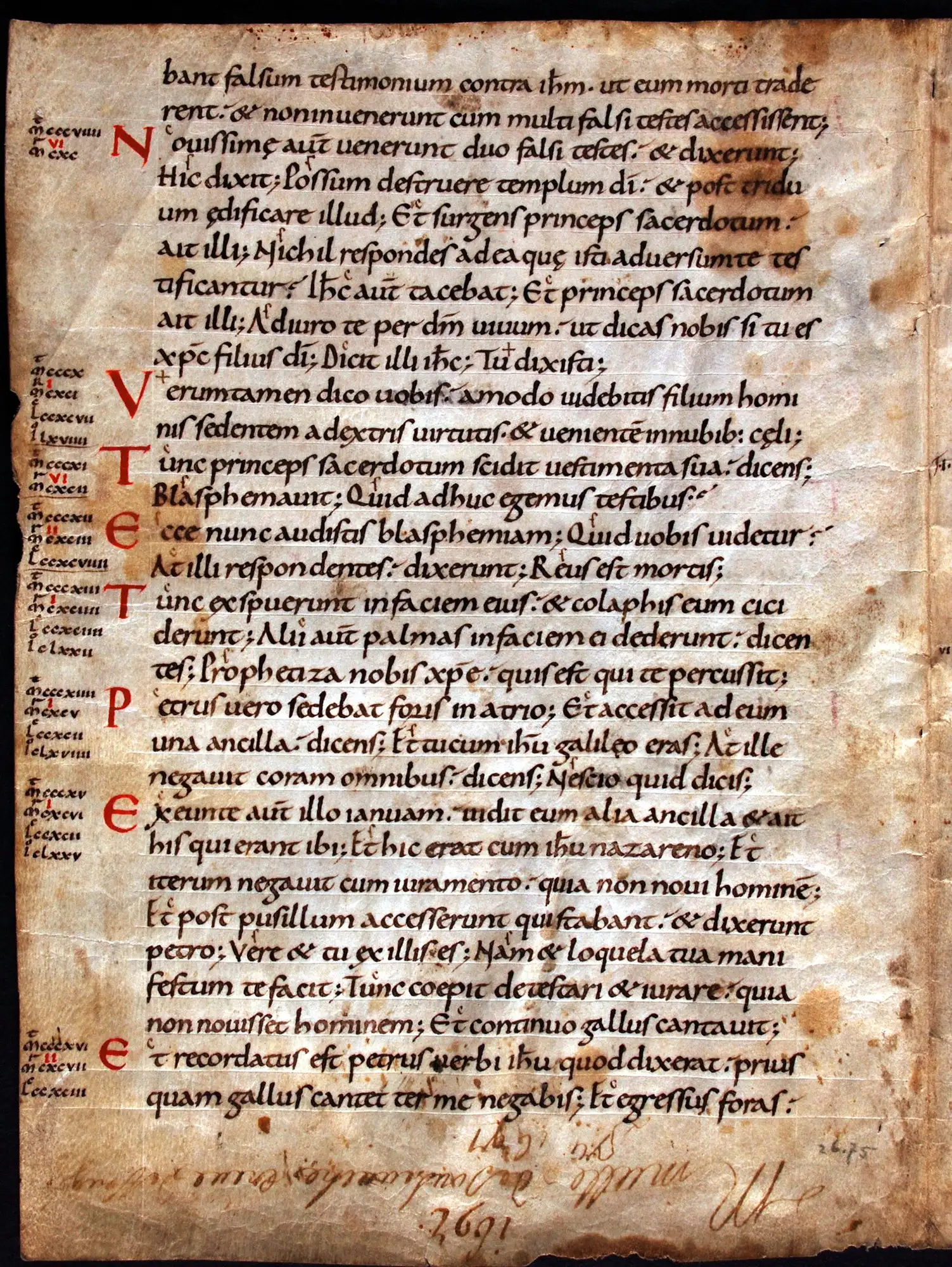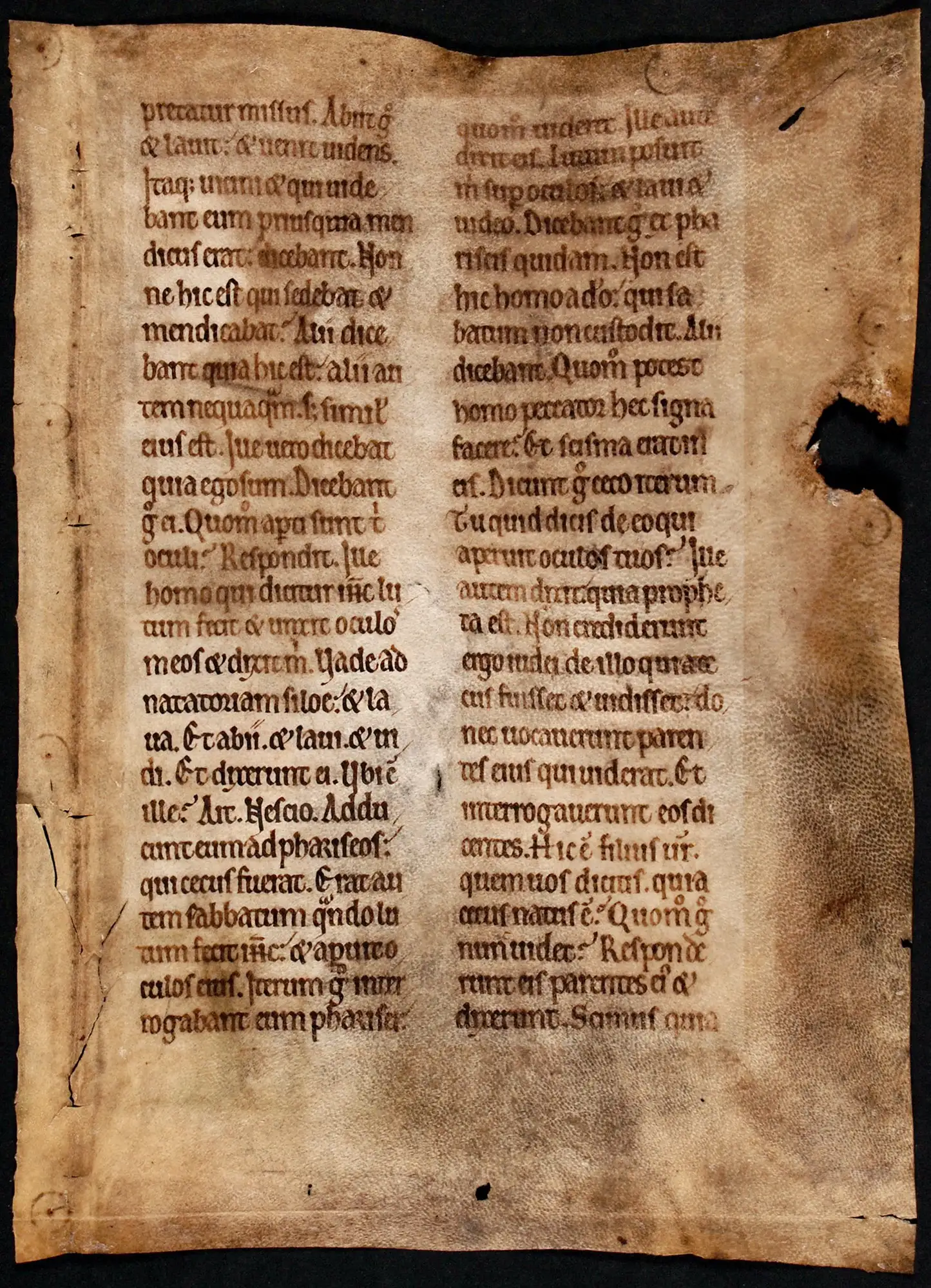
Bifolium from a Gospel book, in Latin. France, late ninth century. Reed MSF1a.
The oldest manuscript fragments held in the Reed Collection are three leaves - a bifolium and a single leaf - of vellum (calfskin), written in a style known as a Carolingian minuscule. This style of handwriting was developed by the monk Alcuin of York under the instructions of the Emperor Charlemagne. Notable for its rounded letter forms, it was the main script in use from the ninth to eleventh centuries.
The two joined leaves displayed here formed part of a gathering of several leaves, but not in the middle of the section - hence the text is not continuous. The page on the left contains the latter portion of the 26th chapter of the Gospel of Matthew – Christ’s arrest and the denial of Peter. The upper part of the right-hand page contains an index to some events in Matthew’s Gospel, followed by the first few verses of Mark (containing the baptism of Jesus by John).
These leaves were used as wrappers for legal documents in France in the late seventeenth century, as evinced by an upside-down inscription dated 1697.
